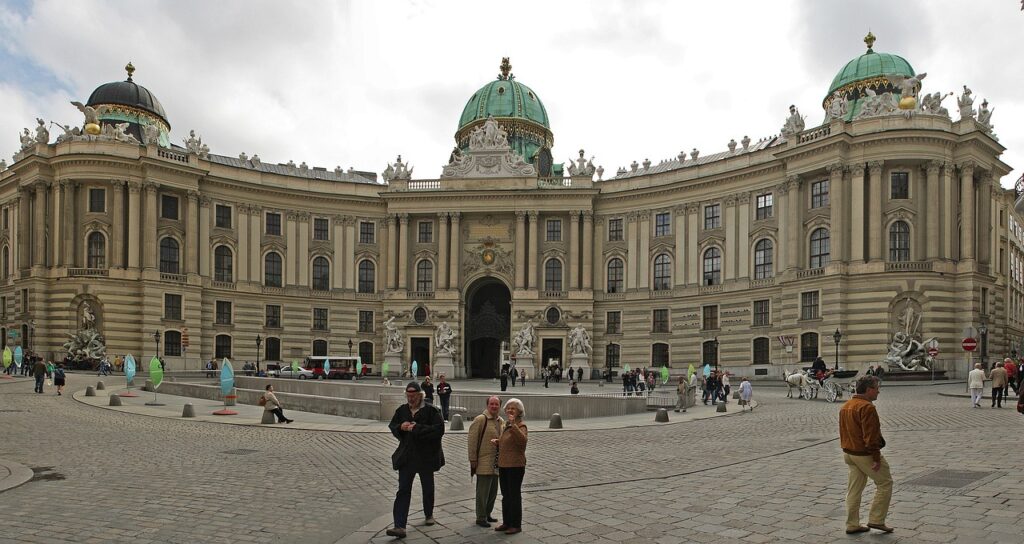Blog
Removals to Vienna with Hamiltons Removals

Vienna may be the most famous for its arts and culture, and for its history – but there’s a lot more to Austria’s capital. Hamiltons Removals, who can help with commercial and domestic removals to Vienna, take a closer look at the city and what to expect if you’re looking to move there.
The History and Heritage
The name Vienna comes from the Celtic word ‘Vindobona’ (which literally translates as white base), suggesting the city originally dates back from pre-Roman times.
Various family dynasties have ruled over the city – probably the most important and best known are the Habsburgs, who were in control of Vienna for more than 600 years, from. Over these centuries Vienna developed its reputation as one of the world’s foremost classical music centres, particularly during and after the Renaissance starting in the 14th century, with Beethoven, Mozart, Schubert and Haydn all making the city their home.
Nowadays, Vienna has a thriving economy – it effectively acts as a gateway to Eastern European markets, since the fall of the Berlin Wall in 1989. Major contributors to the country’s economy are the service sector and start-ups, and more specifically IT and life sciences, as well as tourism.
Getting There and Getting Around
Vienna International Airport (code VIE) is just outside the city (to the southeast) and is closest to the suburb of Schwechat. If you’re travelling to Vienna from here in the UK, EasyJet, British Airways and Austrian Airlines all run direct flights between the UK and the city.
You can get to the city centre via the S-Bahn rail service which has a stop at the airport, but you may need to change to the underground or U-Bahn to get to your destination. There are also shuttle buses to the Hauptbahnhof, the main central railway station in Vienna. Inter-city and night trains run to Vienna from most major European cities (look for the Wien moniker, the German translation).
Travelling around Vienna by car is also an option (a third of all journeys to the city are made by car) but parking is limited and expensive in the city centre. It’s recommended that you park on the outskirts and then use public transport – you have a choice of U-Bahn, S-Bahn (five lines), or by tram or bus or by boat down the Danube, which famously runs through the city (but the last option is only best if you aren’t in a hurry).
Cycle lanes are another option, but they aren’t very well integrated with the rest of the network; routes may be shared with pedestrians and are generally not well signposted.
The Main Attractions
Most of the attractions to enjoy in Vienna are architectural or musical (or sometimes both) in nature.
The Hofburg Imperial Palace, pictured, in the city centre, and the Schonbrunn Palace in the Hietzing district, were both residences of the ruling Hapsburg dynasty (the latter just in the summer). Since 1946, the former has been the workplace of the president of Austria and parts of it are open to the public – it also contains museums, a church and chapel, and The Spanish Riding School, which is known the world over for its precision dressage displays and you can still see them today.
Schonbrunn Zoo is in that palace’s gardens, if you would like to visit something more family-friendly; it houses more than 600 species of animals.
When it comes to musical venues in Vienna, you have plenty to choose from. The State Opera House (Staatsoper), and the Volksoper both host operas and operettas regularly; St Stephen’s Cathedral also hosts concerts as well as being a place of worship, and both the palaces mentioned above also host musical events regularly.
Vienna is also famous as the setting for the film The Third Man, and the giant Ferris wheel used in a major scene is still functioning today; you get great views over the city if you don’t mind heights, and the Praterpark in which it’s located also contains other funfair rides, a planetarium, and plenty of shops and restaurants.
Shopping Around and Eating Out
The pedestrianised Old Town (which also contains the Hofburg Palace) has most of the major brand-name stores – particularly in Kohlmarkt, Karntner Strasse, and The Graben.
There are several malls if you want something slightly cheaper, including a Westfield in the Donau Zentrum; if you want something more artisan/independent, head for Neubaugasse in the city’s 7th district.
For a taste of the local delicacies, the Wiener Schnitzel pork cutlets are famous the world over; and sausages are another favourite (sold at booths around the city and at major events). When it comes to desserts – which is what Viennese chefs are most famous for – as well as apple strudel and sachertorte chocolate cake, you could also try Kaierschmarrn – a shredded pancake with plums.
What is the Cost of Removals to Austria?
Vienna is one of the cheaper capital cities to live in in Europe – certainly much cheaper than London. City centre prices in the tourist areas, such as for accommodation and food, are much more expensive than the suburbs as you might expect.
If you are considering domestic or commercial removals to any part of Austria, at Hamiltons we can offer the basic transportation package, or several additional services such as packing and unpacking, and a full professional deep clean of the property of your old and new homes.
We also offer online video surveys and online quotes to help make the process more convenient for you. You can also call us on 01379 855203 and we will be more than happy to discuss your removal options with you.
« Back







